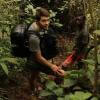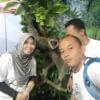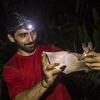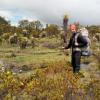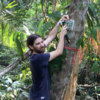Acoustic sensors enable efficient and non-invasive monitoring of a wide range of species, including many that are difficult to monitor in other ways. Although they were initially limited in application scope largely due to cost and hardware constraints, the development of low-cost, open-source models like the Audiomoth in recent years has increased access immensely and opened up new avenues of research. For example, some teams are using them to identify illicit human activities through the detection of associated sounds, like gunshots, vehicles, or chainsaws (e.g. OpenEars).
With this relatively novel dimension of wildlife monitoring rapidly advancing in both marine and terrestrial systems, it is crucial that we identify and share information about the utility and constraints of these sensors to inform efforts. A recent study identified advancements in hardware and machine learning applications, as well as early development of acoustic biodiversity indicators, as factors facilitating progress in the field. In terms of limitations, the authors highlight insufficient reference sound libraries, a lack of open-source audio processing tools, and a need for standardization of survey and analysis protocols. They also stress the importance of collaboration in moving forward, which is precisely what this group will aim to facilitate.
If you're new to acoustic monitoring and want to get up to speed on the basics, check out these beginner's resources and conversations from across the WILDLABS platform:
Three Resources for Beginners:
- Listening to Nature: The Emerging Field of Bioacoustics, Adam Welz
- Ecoacoustics and Biodiversity Monitoring, RSEC Journal
- Monitoring Ecosystems through Sound: The Present and Future of Passive Acoustics, Ella Browning and Rory Gibb
Three Forum Threads for Beginners:
- AudioMoth user guide | Tessa Rhinehart
- Audiomoth and Natterjack Monitoring (UK) | Stuart Newson
- Help with analysing bat recordings from Audiomoth | Carlos Abrahams
Three Tutorials for Beginners:
- "How do I perform automated recordings of bird assemblages?" | Carlos Abrahams, Tech Tutors
- "How do I scale up acoustic surveys with Audiomoths and automated processing?" | Tessa Rhinehart, Tech Tutors
- Acoustic Monitoring | David Watson, Ruby Lee, Andy Hill, and Dimitri Ponirakis, Virtual Meetups
Want to know more about acoustic monitoring and learn from experts in the WILDLABS community? Jump into the discussion in our Acoustic Monitoring group!
Header image: Carly Batist
No showcases have been added to this group yet.
Wildlife Acoustics
- 0 Resources
- 1 Discussions
- 1 Groups
- @AnnabelL
- | she/her
- 0 Resources
- 0 Discussions
- 10 Groups
Michigan Natural Features Inventory (MNFI)
Wildlife ecologist
- 0 Resources
- 1 Discussions
- 6 Groups
Researcher at Forest Research Institute Baden-Wuerttemberg, Passive acoustic monitoring of woodcock
- 0 Resources
- 0 Discussions
- 5 Groups
Zoological Society London (ZSL)
Monitoring & Technology Lead, Conservation & Policy, ZSL
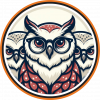
- 2 Resources
- 0 Discussions
- 2 Groups
Dzanga-Ndoki national park biodiversity monitoring

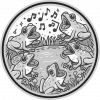

- 0 Resources
- 64 Discussions
- 10 Groups
- @HannahJasinski
- | She/Her
- 0 Resources
- 0 Discussions
- 3 Groups
- 0 Resources
- 0 Discussions
- 3 Groups

- 0 Resources
- 2 Discussions
- 6 Groups
Orthoptera conservationist bioacoustics
- 3 Resources
- 0 Discussions
- 2 Groups
- @dombroski.julia
- | she/he/hers
- 0 Resources
- 1 Discussions
- 3 Groups
- 0 Resources
- 0 Discussions
- 7 Groups
Are you ready for this year's #Tech4Wildlife Photo Challenge? In anticipation, we're counting down our ten favourite entries from last year. Do you think you can top these?
1 March 2017
The Conservation Leadership Programme (CLP) is a training and capacity building programme that targets individuals from developing countries who are early in their conservation career and demonstrate leadership...
21 November 2016
Do you work on conserving Neotropical migratory birds? Do you need funding? Why not apply for a grant from the U.S. Fish and Wildlife Service through the Neotropical Migratory Bird Conservation Act's grant program? The...
8 November 2016
Caves don't tend to be well-liked ecosystems, being extremely dark, often quite cramped, and slippery. And the creepy-crawlies that live within them can be the stuff of nightmares. Nevertheless, one's attitude towards...
25 July 2016
More than half of all primate species are endangered, including our closest living relative, the chimpanzee. Could Passive Acoustic Monitoring (PAM) be applied to primates as well as it has been for other taxa? In this...
29 June 2016
Since 2013, volunteer citizen scientists taking part in the Norfolk Bat Survey have generated over 1.2 million bat recordings, making this one of the most extensive high-quality datasets for bats collected by citizen...
5 February 2016
New horizon scanning report published this month identifies 15 emerging threats and opportunities for global biodiversity.
3 February 2016
August 2025
event
September 2025
event
October 2025
November 2025
event
November 2022
event
October 2022
event
September 2022
64 Products
Recently updated products
| Description | Activity | Replies | Groups | Updated |
|---|---|---|---|---|
| The Conservation Technology Lab at San Diego Zoo seeks undergrads for summer projects in computer vision, machine learning, bioacoustics,... |
|
Acoustics, AI for Conservation, Conservation Tech Training and Education | 2 years 7 months ago | |
| Yeah, it's an exciting project. Also will be a great excuse to improve PAMGuard documentation - something sorely needed. Python libraries also on the way as part of this.As for... |
|
Acoustics | 2 years 9 months ago | |
| Hi Alex,I'd go much further along the lines that David @dtsavage sets out. Before jumping to implementations, better think through why you want to keep all that data, and for who... |
|
Acoustics, Data management and processing tools | 2 years 9 months ago | |
| The open-source program Audacity can show the spectrograms and histograms and has quite a lot of other useful features, e.g. playing ultrasound calls slower, so it can be heard by... |
|
Acoustics, Citizen Science, Data management and processing tools, Open Source Solutions, Software Development | 2 years 9 months ago | |
| Thanks so much!! |
|
Acoustics, AI for Conservation, Animal Movement, Camera Traps, Community Base, Data management and processing tools, Drones, eDNA & Genomics, Emerging Tech, Open Source Solutions, Geospatial, Software Development | 2 years 10 months ago | |
| I love the idea of increasing international collaboration and inclusion within acoustic monitoring! I think there particularly needs to be more collab'ing between the terrestrial... |
|
Acoustics | 2 years 10 months ago | |
| Hi there Camilo, What an interesting project! If you are looking for a lower cost, but effective tools for acoustic monitoring you might want to look into two options: ... |
|
Acoustics, AI for Conservation, Data management and processing tools, Sensors, Software Development, Latin America Community | 2 years 10 months ago | |
| I have been waiting for journal club to come back!! 10000% down.I agree with @StephODonnell, would love it to come back!!! And now that variety hour is happening, that's more of... |
|
Acoustics, Community Base | 2 years 11 months ago | |
| Alex,which one of thosehttps://selectronix.co.uk/collections/waterproof-acoustic-vents would be the appropriate for the Audiomoth case?Agus |
|
Acoustics | 2 years 11 months ago | |
| Hey maya, If you're free - come along to our Variety Hour call next week and ask folks there too. We're keeping the last 10 mins open for people to jump up and put out calls... |
|
Acoustics | 3 years ago | |
| @Andrew_Hill I wonder if you could let us know more about the time keeping difference btw the regular AudioMoth and the HydroMoth (which is said to do better)? |
|
Acoustics, Marine Conservation | 3 years ago | |
| The Bioacoustics Stack Exchange has now made it past the private beta stage and onto public beta as of July 26! This means that the site... |
|
Acoustics | 3 years ago |





